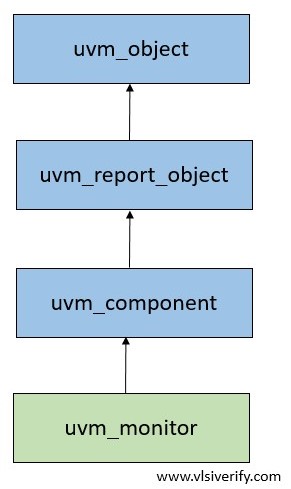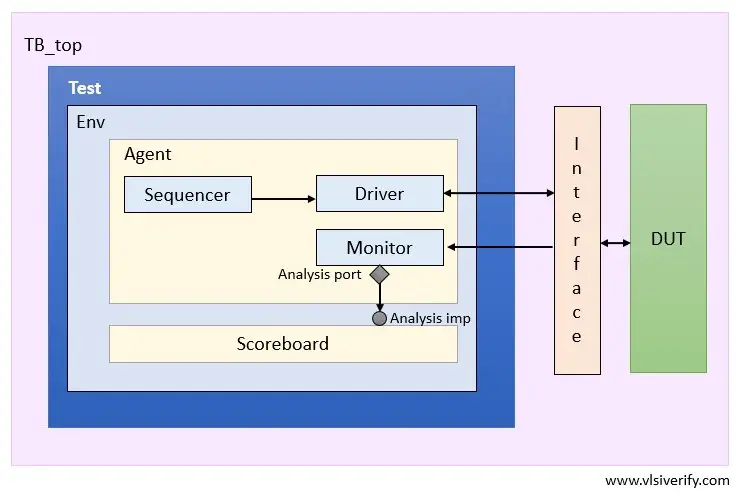Tutorials
Learn More
UVM Monitor
A UVM monitor is a passive component used to capture DUT signals using a virtual interface and translate them into a sequence item format. These sequence items or transactions are broadcasted to other components like the UVM scoreboard, coverage collector, etc. It uses a TLM analysis port to broadcast transactions.
uvm_monitor class declaration:
virtual class uvm_monitor extends uvm_componentA user-defined monitor has to be extended from uvm_monitor which is derived from uvm_component.
class <monitor_name> extends uvm_monitor;uvm_monitor class hierarchy

Purpose of Monitor
- Capture signal level information and translate it into the transaction.
- Broadcast transactions to other components using TLM port for coverage collection and checking purposes (scoreboard). It can also control them with enable/ disable knobs if required.
- Capture protocol-specific information and forward it to the related scoreboard or checker where protocol check happens
How to create a UVM monitor?

- Create a user-defined monitor class extended from uvm_monitor and register it in the factory.
- Declare virtual interface handle to retrieve actual interface handle using configuration database in the build_phase.
- Declare analysis port to broadcast the sequence items or transactions.
- Write standard new() function. Since the monitor is a uvm_component. The new() function has two arguments as string name and uvm_component parent.
- Implement build_phase and get interface handle from the configuration database.
- Implement run_phase to sample DUT interface using a virtual interface handle and translate into transactions. The write() method sends transactions to the collector component.
UVM Monitor Example
class monitor extends uvm_monitor;
// declaration for the virtual interface, analysis port, and monitor sequence item.
virtual add_if vif;
uvm_analysis_port #(seq_item) item_collect_port;
seq_item mon_item;
`uvm_component_utils(monitor)
// constructor
function new(string name = "monitor", uvm_component parent = null);
super.new(name, parent);
item_collect_port = new("item_collect_port", this);
mon_item = new();
endfunction
function void build_phase(uvm_phase phase);
super.build_phase(phase);
if(!uvm_config_db#(virtual add_if) :: get(this, "", "vif", vif))
`uvm_fatal(get_type_name(), "Not set at top level");
endfunction
task run_phase (uvm_phase phase);
forever begin
// Sample DUT information and translate into transaction
item_collect_port.write(mon_item);
end
endtask
endclass
UVM Tutorials